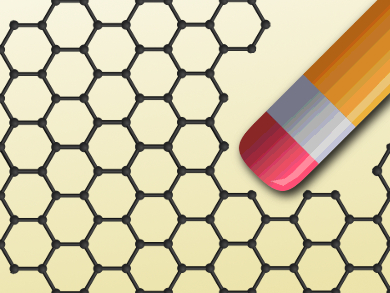Chemical vapor deposition (CVD) of carbon onto a copper surface is one way to synthesize high-quality graphene. During this process, graphene can not only be grown by adding carbon atoms from methane on to the surface, but can also be “etched”. Hydrogen gas, for example, can remove carbon atoms from the surface, which are transported away in the form of methane. The two processes exist in a dynamic equilibrium.
Zhiping Xu, Tsinghua University, Beijing, China, Gui Yu, Chinese Academy of Sciences, Beijing, and colleagues performed low-pressure CVD using a hydrogen-diluted methane stream to make graphene. The team was able to control the shape of the resulting graphene by varying the flow rate of H2 and thus tuning the etching process. With an increase in H2 flow, the shape of the graphene changed from dispersed graphene fragments to branched structures that resemble snow flakes and finally to compact structures.
The team created a phase-field model to simulate the growth and etching processes and found that it sucessfully reproduced the experimental results. According to the researchers, the insights into CVD mechanisms from their study could also apply to other 2D materials. Additionally, the method could be used to produce tailored graphene morphologies with useful properties.
- Etching-Controlled Growth of Graphene by Chemical Vapor Deposition,
Birong Luo, Enlai Gao, Dechao Geng, Huaping Wang, Zhiping Xu, Gui Yu,
Chem. Mater. 2017.
DOI: 10.1021/acs.chemmater.6b03672


